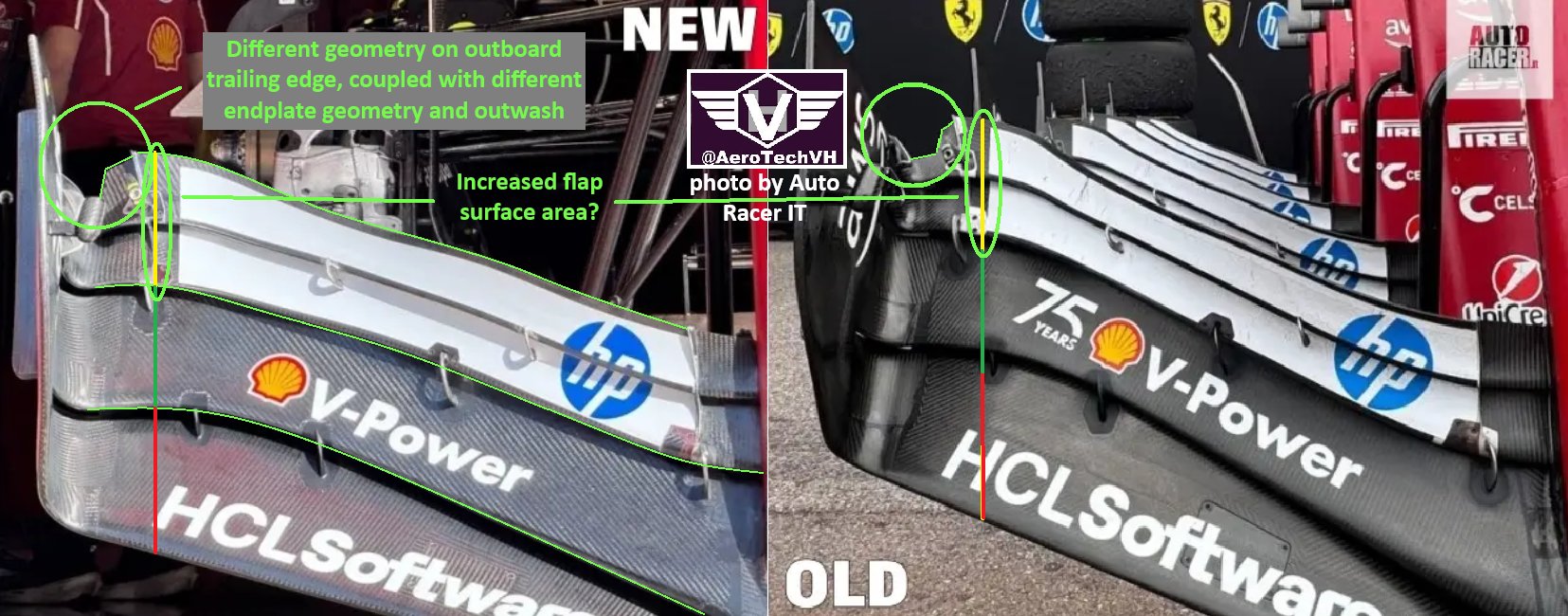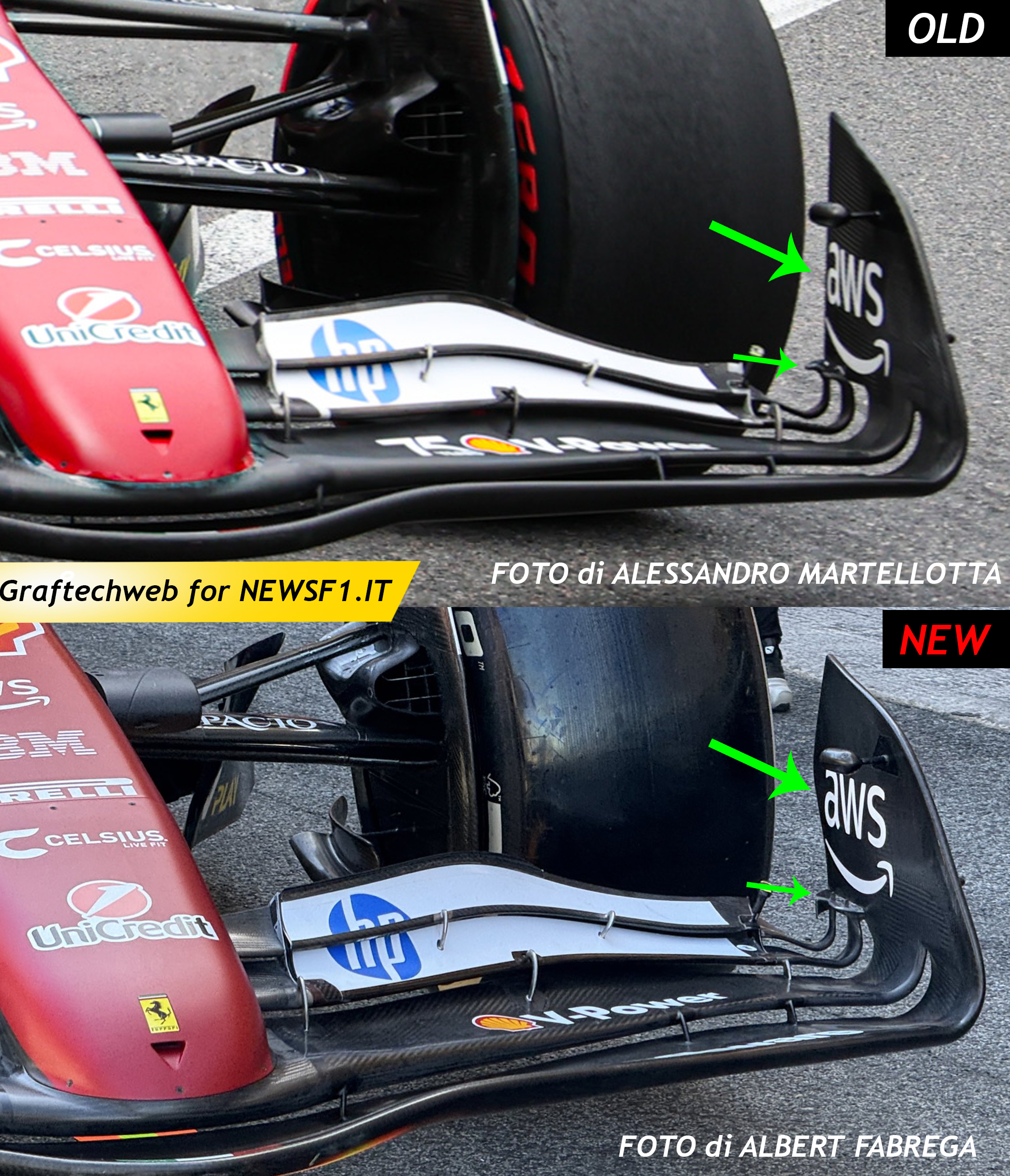
- Login or Register
No account yet? Sign up
extra strake on the outboard side of the endplate is cheeky


Agree with this. There's two direction to this, one for vertical load (largely originating from the increased test in vertical some time ago) to stop droop in a "moustache" direction. Secondly, and likely more to compensate for this regulation shift imposed now, torsional flex which is used to "hold" the two upper flaps in deviation from tested criteria.Vanja #66 wrote: ↑29 May 2025, 11:33As usual, @Auto_Racer_it is first at the scene and we can take a look at new geometry details thanks to them
Changes are subtle, but bigger than what they appear at first sight. Not as big as what Mercedes did, but then again Ferrari had the least flexing anyway
I think the biggest change in terms of performance is the endplate junction and outwash treatment, which may also be a mechanism to recover some of the balance loss with less flexing. At low speed, steering angles and thus front wheel angles are higher and this front wing performance is different to lower steering angles at high speed
Flaps have higher chord now on Ferrari it would appear, while the 2nd element (which carries all the vertical load to the nose basically) is different and this could also be for structural reasons
Front view of flap trailing edge is probably very similar, and it would appear the wing still carries more inboard loading
https://pbs.twimg.com/media/GsGyvQiXwAA ... ame=medium
https://pbs.twimg.com/media/GsGywE7XwAA ... name=large



I am wondering why people are looking at the inside part of the wing? The flexing, since it is mainly coming from torsion, are the most important at the outer end of the wing. This part has the least influence overall.
You've been lied to, mate

Since 2022 outer fw section has a lesser angle of attack than inboard section. Inner section is more loaded and is flexing more
